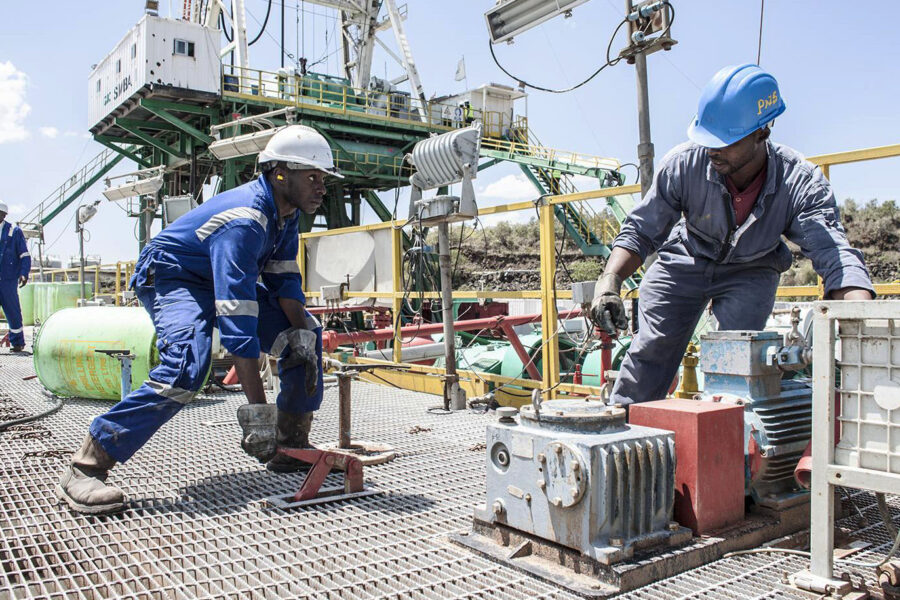Mining for a carbon-neutral, inclusive, and sustainable future
How can we ensure that a healthy extractives industry delivers on the SDGs?
Extractive and land resources — Global

With leadership in Europe and Asia, and with the US finally back at the table, we are on the cusp of the energy and digital transformations needed to avoid climate catastrophe and to achieve the Sustainable Development Goals (SDGs). In the coming years we will see a massive deployment of solar and wind farms, electric vehicles, and mobile platforms that allow for telehealth and remote education, among a proliferation of new technologies for our carbon-neutral and increasingly digitized future.
Believe it or not, this leap to the future will require a scale-up in one of our most basic and ancient practices: the primary extraction of minerals and metals. But not all minerals – fossil fuels are overdue to be phased out. They are clinging to life because of short-termism in the market, reckless climate denialism, misinformation campaigns, and the inertia of politicians and bankers whose campaigns or bonuses are bankrolled by the sector and their short-sighted profits. It’s more complicated in countries currently dependent on coal, oil, or gas for their economic development. The rest of the world, meanwhile, has a responsibility to pave the path for a just transition from fossil fuels to sustainable energy and livelihoods.
But for many minerals, it’s a different story. Wind turbines, solar panels, battery storage, mobile phones, and other technologies, combined with rapid urbanization, automation, infrastructure development, and population growth, mean we can safely forecast a much greater need for so-called critical minerals. These are minerals required for a range of existing zero-carbon technologies and, therefore, understood to be core to our net-zero-carbon future. Indeed, they may be the minerals in which we might expect the greatest near-term demand growth – though in this era of rapidly changing technologies, materials, and approaches, the ‘criticality’ of these minerals may also keep shifting.
Mining and development
Mining has always been at the heart of the sustainable development challenge. The materials produced are the building blocks of our economies, from roads and bridges to wind turbines and satellites. For many countries rich in resources, the revenues expected from these resources are the primary source of public income, and therefore for financing public goods (health systems, education, water and sewage systems, electric grids, and so on). The mining sector can create jobs (though not as many jobs as often hoped and subject to the changes resulting from increased automation). Upstream, downstream, and knowledge linkages, which remain woefully underdeveloped in most resource-rich countries, can deepen their participation in global value chains. Through local supply chains, skills training, and project-related services, the sector can create local opportunities and livelihoods, including by fostering the emergence of competitive small and medium-scale enterprises. If properly managed, it can build service sectors that are transferable to other sectors of the economy, deepening economic resilience beyond the currency of mining.
Though too often overlooked, mining can also play an instrumental role in expanding the affordability and accessibility of infrastructure and in fostering resource-driven industrialization, diversification, and economic development, locally and regionally. Mining requires substantial power, roads, rail, ports, water, and information and communication technology (ICT) systems. These projects often take place in areas where infrastructure networks are underdeveloped. Historically, mining companies have built the infrastructure needed for their projects, and excluded other users because of the perceived inefficiencies and complexities of allowing other users to share access. But the potential gains from sharing mining-related infrastructure are enormous. Building in extra capacity to a rail network can unlock an agriculturally rich region to export markets and ease the import of key inputs, like seeds and fertilizers. A project’s need for massive and reliable power, even or especially in remote areas, can anchor the development or scaling of new off-grid renewable energy projects that bring clean energy to otherwise energy-poor regions.
Projects can also anchor demand to expand national grids. In turn, more robust energy systems, along with other types of physical as well as soft infrastructure, allow for industrialization. This can include the development of energy-intensive industries, such as the production of green hydrogen, steelmaking for wind turbines, and the production and recycling of batteries that are critical for the deployment of zero-carbon energy technologies. Mining, energy and other infrastructure, and industry can therefore work together as gears in an engine of zero-carbon economic development for resource-rich countries.
Mitigating impacts
Mining is at the heart of the sustainable development challenge as much for its impacts as for its potential. Mining projects are resource intensive. They require large swaths of land, and sometimes the displacement of communities or other livelihoods. They may compete for water with local or downstream uses and users, including traditional agriculture or even clean, safe drinking water. Projects inevitably impact the environment, including disruptions to biodiversity and ecosystems. These impacts have been and will continue to be exacerbated by climate change, adding the challenges of water stress, floods, and other documented impacts of climate change on workers’ health and productivity. Greater demand will create greater impacts, as mining pushes into new frontiers, expanding into new territories or requiring more energy and resources to deepen the production of existing reserves.
Mining has the potential to catalyze sustainable development, through taxes and royalties, local procurement or processing, expanded access to infrastructure, capacity-building, industrialization, and so on. Yet those benefits have been slow to materialize in most parts of the world. The sector has been plagued by corruption and mismanagement, conflict with local communities, devastating ‘shortcuts’ and lack of capacity to prevent and manage social and environmental impacts, and lack of coordination among public and private actors. While the long-term interests of companies should align with the long-term interests of their host communities (stable projects, locally available skills and resources, and a profitable project), short-term interests do not always align. Nor do the interests of company shareholders, often willing to externalize costs to maximize profits, align with local interests to avoid impacts and share in the benefits.
Towards a sustainable future for mining
The Decade of Action brings a clarion call to the mining sector, both to the industry actors and those who support, finance, and govern the sector. Mining’s role in achieving the SDGs is central but not linear. Our ability to produce existing and future technological solutions depends on resource availability, which in turn depends on the sector’s ability to supply minerals sustainably.
Companies must urgently:
- Switch to net-zero-carbon energy.
- Address deforestation, biodiversity loss, and other ecosystem impacts by applying the mitigation hierarchy.
- Use water efficiently and responsibly, including by (re)using waste water and treating the water they use before discharging it.
- Conduct climate risk assessments and community vulnerability assessments, and develop accompanying management strategies and plans.
- Engage meaningfully with and secure the law-abiding consent from affected communities.
- Improve recovery of minerals from traditional ‘waste’ during production.
- Invest in material recycling and reclamation.
Companies share responsibility with their government partners, suppliers, and downstream customers to protect the environment and human rights, including rights to health, living wages, and worker representation. These considerations should be integrated in companies’ core business models and reported on as such.
The financialization of commodities contributes to the decoupling of commodity prices from demand and supply dynamics, further distorting price dynamics and market signals. In this regard, accountants, traders, investors, and regulators each have an important role in ensuring that commodity prices reflect their unabated social and environmental costs.
The SDGs provide an instrumental guide and a practical tool for this Decade of Action. Rather than showing how existing activities map to specific goals, companies should seek to understand the transformations required to achieve them. In line with the so-called ‘sustainable development license to operate,’ they should orient all business operations and activities toward achievement of the SDGs. At a practical level, the SDGs can create a common platform for companies, investors, governments, regional banks, development partners to collect and assess development needs, coordinate interventions, monitor impacts, facilitate stakeholder engagement and participation in decision-making, and adapt programs as necessary.
To realize the potential contribution of the mining sector to achieving the SDGs, appropriate governance mechanisms also need to be put in place. National governments as well as regional and continental organizations should localize the SDGs through ‘green new deals.’ These are law and policy frameworks that outline, for specific national and regional contexts, how to define, encourage, and regulate climate and SDG-aligned investments from public and private sources. They should lay out guidance and rules on how the mining sector will work, not in isolation, but alongside other key parts of the economy, to achieve the vision of a climate-neutral, inclusive, sustainable future.





